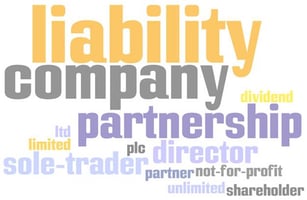Value has different meanings to different people depending upon their opinions, or circumstances in...
Investment Property - What Structure?
 Investments can be held in a number of different structures, e.g. individual, partnership, company, trust and superannuation fund.
Investments can be held in a number of different structures, e.g. individual, partnership, company, trust and superannuation fund.
There is no one size fits all.
Choosing an investment structure largely depends on a number of factors including asset protection, financing requirement, income tax, capital gain tax, income streaming requirement and cost of compliance. The advantages and disadvantages of each investment structure for negative gearings are explained below
Individual
This is the easiest investment structure of all the structures mentioned above. The setup and compliance costs are low.
Negative gearing losses can be used to offset wages, other investment income or business income of the individual taxpayers. Negative gearings are most effective for high income earners as 46.5% of the losses are effectively paid by reduction in tax payable. However, when the investment is eventually sold, the individual will be taxed on the capital gain and most likely at the top marginal rate. One important exception is when the property is passed from the deceased estate to the next generation directly. There are generous CGT concessions available. Investors have to crunch the numbers to see the full cost and benefit of investing directly.
Partnership
If financing is the problem, people could invest as joint tenants or tenants in common. The setup and compliance cost is also very low.
For the joint tenants, each of the joint tenants is deemed to have 50% equity interest in the investment and entitled to 50% negative gearing losses. These losses can be used to offset their other personal assessable income.
Tenants in common, on the other hand, may hold unequal interests in the investment. Their entitlement to the income is determined by their entitlement to the interest in the investment. Negative gearing losses are distributed to each individual tenant in common and can be used to offset other income.
Sometimes negative gearings could go wrong for a husband and wife who purchase a rental property as joint tenants. The husband is a high income earner but the wife is a low income earner and her income cannot absorb all the negative gearing losses. To solve this problem, the husband could salary packaging the entire interest expenses. This will increase the husband’s net income and reduce the wife’s tax losses.
If one of the joint tenants dies, his interest in the investment directly passes to the surviving tenant and there is no CGT or stamp duty issue.
If a tenant in common dies, his interest in the investment will go to his estate and it is up the trustee of the deceased estate to decide what to do with the interest in the property. There could be CGT and stamp duty issues when the interest in property is sold by the trustee. However, generally speaking there is no CGT if the interest in property is passed to the beneficiaries or legal personal representative directly.
Trust
A unit trust is the preferred investment structure when unrelated investors contribute capital to the investment purchase and would like a definite share of capital and income.
A discretionary trust is the preferred investment structure when asset protection or income streaming is the dominant reason for choosing an investment structure.
For both unit trust and discretionary trust, negative gearing losses are trapped within the trust. There are complex rules regarding carried forward trust losses deductions. A family trust election may be considered.
Both the unit trust and discretionary trust are eligible for the 50% general CGT discount if the investment is held for more than 12 months before sale.
Two common mistakes about negative gearing and trusts are:
- Individual beneficiary borrows from the bank and lend the money interest free to the discretionary trust (normally referred to as a family trust), and claims interest expenses against the trust distribution. According to the ATO, the beneficiary cannot claim interest expenses against the trust distribution as there is no nexus between the interest expenses and the discretionary trust income
- Individual unit holder borrows from the bank and uses the money to subscribe to the units of the units trust. The unit trust then purchases a residential property and rents the property to a relative of the unit holder for rent significantly below the market value. The individual claims full interest expenses against the rental income and incurs net rental losses.
According to the ATO, the interest expenses are only deductible to the extent of rental income received.
Company
If the investment is held by the company, any negative gearing losses will be trapped within the company and cannot be distributed to shareholders. A company can deduct carried forward tax losses if it satisfies either the continuity of ownership test or same business test.
As the company tax is capped at 30%, both the investment income and capital gain on the sale of property is taxed at 30% only. However, companies are not eligible for the 50% general CGT discount, this could result in a much higher capital gain tax compared to holding investments through a trust.
Self managed superannuation fund
Instalment warrant or limited recourse loan has become quite popular for those investors who would like to hold real properties in the super fund but the super fund does not have enough cash.
Any rental income or capital gain from the sale of the property is taxed at 15%, and the income will be effectively tax free when the members start a pension.
However, the tax savings from negative gearing losses for self managed superannuation fund are only 15% of the losses.
Investors need to budget their cash flow carefully and plan the loan repayments. For example, if the income of the investments cannot cover the interest expenses, how much superannuation contributions are required each year to meet the minimum loan repayments.
For those people at retirement age, limited recourse loan may not be a good option as basically no contributions can be made to the super fund once they turn 75.
If the property effectively absorbs all the capital of the super fund, the super fund may run into some liquidity problems if the property is vacant for a sustained period of time.


